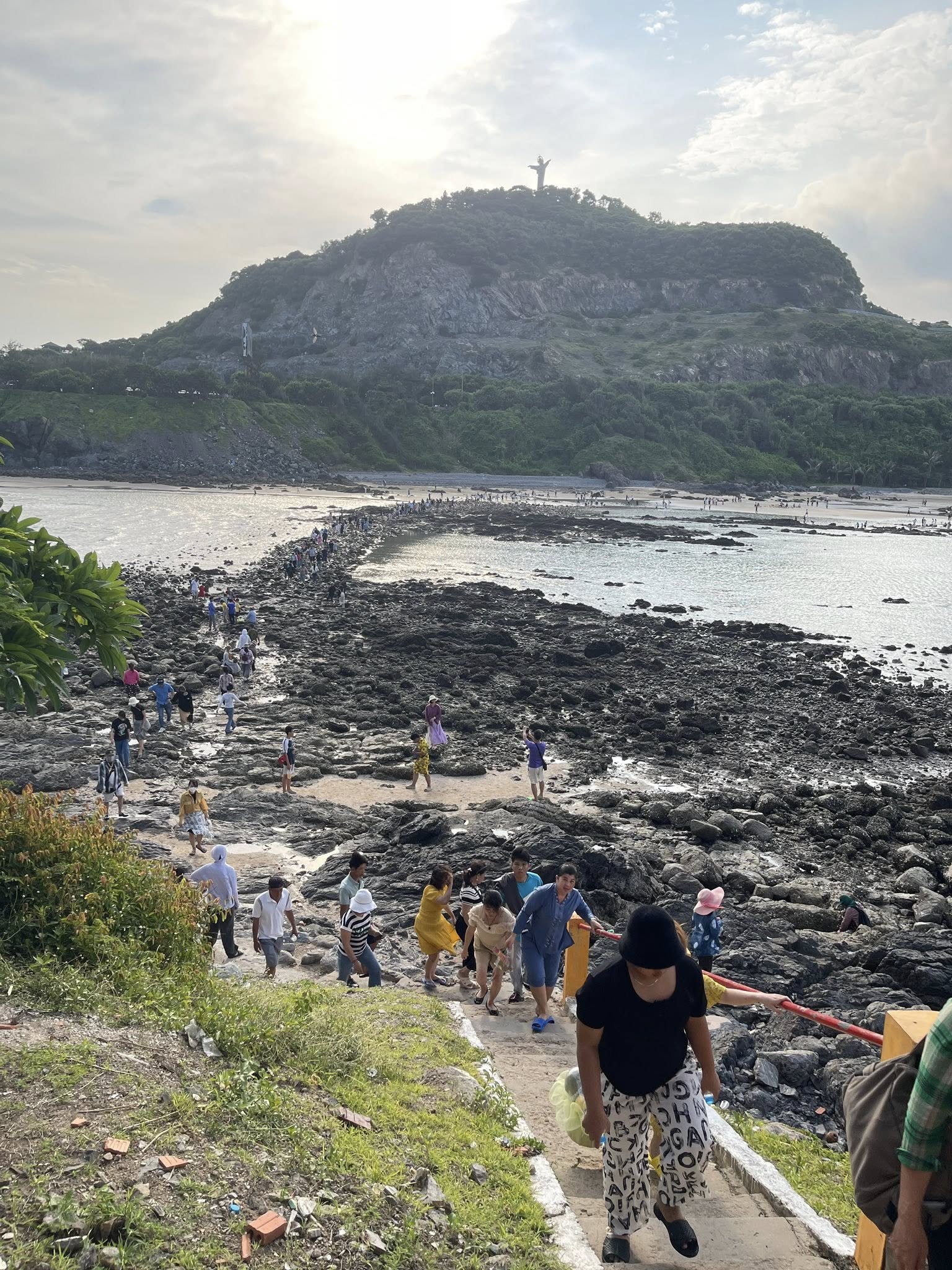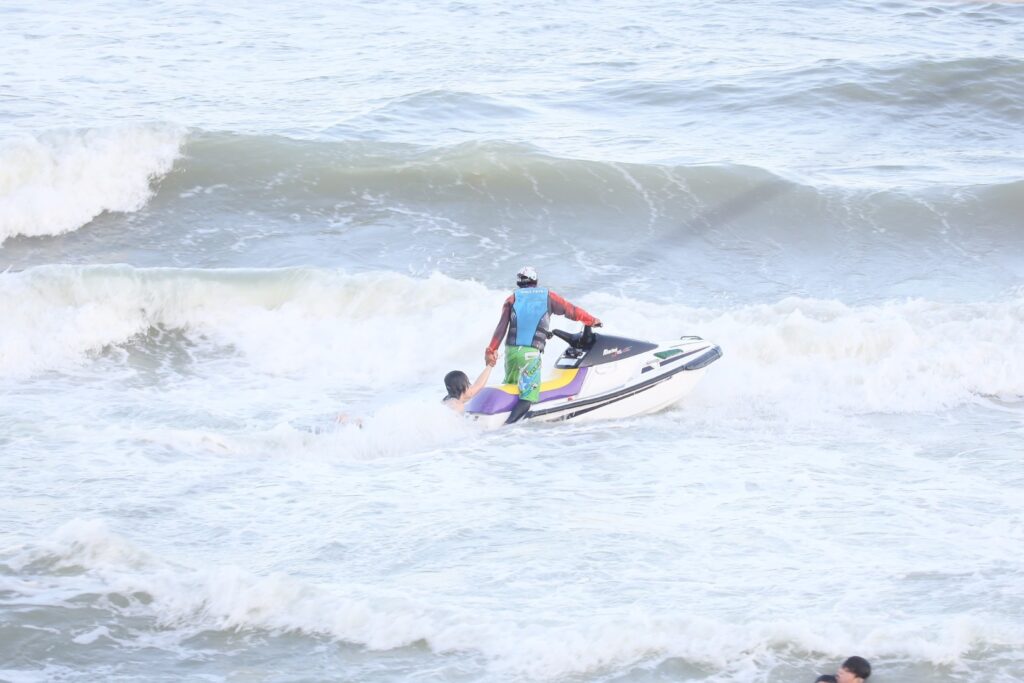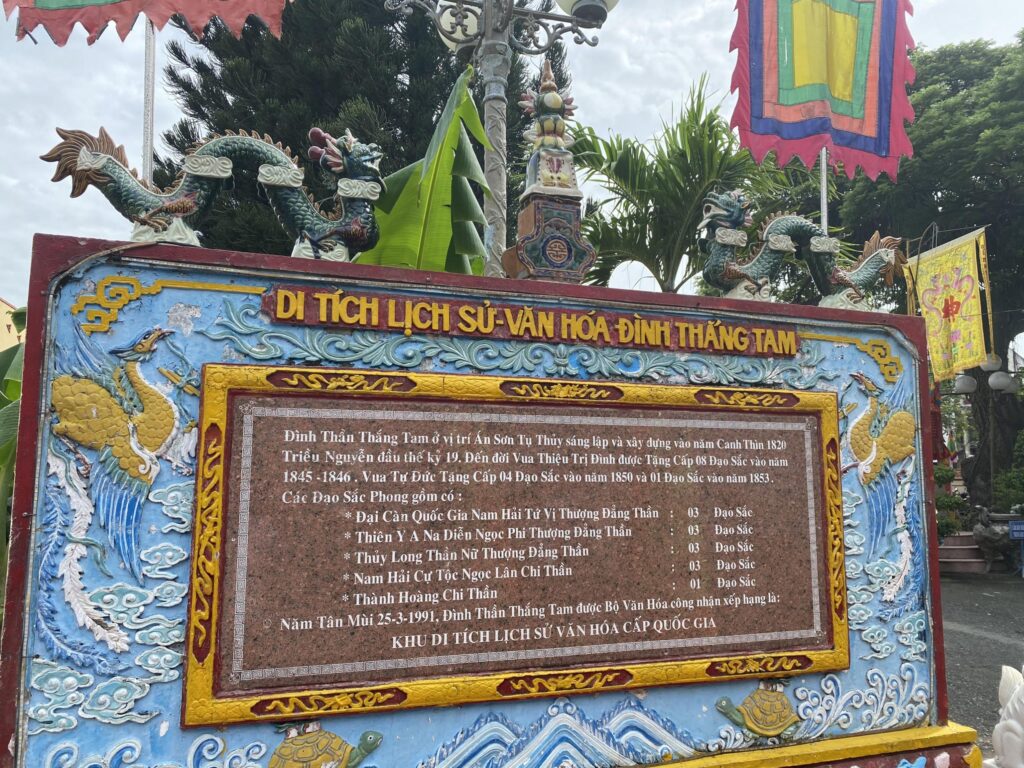Hòn Bà is a small rocky island located just off Nghinh Phong Cape – Back Beach (Bãi Sau) in Vũng Tàu, where the sound of waves continuously crashes against its rugged cliffs. The island is covered with coconut palms, areca trees, casuarinas, and ancient plumeria trees, creating a landscape that feels both wild and mystical.
The Sacred History of Hòn Bà Island
In the year Tân Tỵ 1881, Mr. Hồ Quang Minh – a Central Vietnamese native living in Thắng Tam Village – gave up all of his personal assets to build Hòn Bà Shrine (Miếu Bà Hòn Bà) in honor of Thủy Long Thần Nữ, the Goddess of Water.
He was known as a patriotic man who cared deeply for the people. When he learned that the Huế court had ceded the Southern Six Provinces to France, he was devastated and longed to do something meaningful for the nation, but his plans never materialized. Instead, he decided to build the shrine, praying that Thủy Long Thần Nữ would protect local fishermen and bless every voyage at sea.
After the shrine was completed, Mr. Hồ Quang Minh self-immolated on the island, leaving behind a final wish to remain there forever with the Goddess, watching over the fishermen of Vũng Tàu.
Generations of locals have restored and strengthened the shrine over the years. The shrine stands over 4 meters tall, with the main altar above and a 6m × 3m underground chamber below. This chamber once served as the caretaker’s living quarters and as a secret meeting place for patriotic revolutionaries during the French colonial era.
In 1939, French officer Archinard, commander of the Small Mountain Fortress (Pháo đài Núi Nhỏ), ordered cannon fire on the shrine, suspecting secret activities. Two shells hit its corner but failed to destroy the structure. Two days later, when Archinard personally visited the island to investigate, his gun accidentally discharged, killing him instantly. Since then, French soldiers avoided the island out of fear. Although the French once called it Archinard Island, the name Hòn Bà endured and remains today.

Architecture of Hòn Bà Shrine
The Gate
- Two concrete pillars supporting a tiled roof
- Rooftop decorated with two dragons flanking the sun (lưỡng long chầu nhật)
- Accessed by a curved staircase following the island’s slope
The Main Sanctuary
- Facing Southeast
- Four-pillar design, two tiers, eight roofs, topped with red tiles
- Roof ridges adorned with stylized phoenix motifs
- Upper level built smaller for ventilation and heat reduction
Altar of Thủy Long Thần Nữ – The Water Mother
At the center of the sanctuary is the altar of Thủy Long Thần Nữ, Goddess of rivers and seas, revered as a protective mother of coastal communities.
The shrine also honors the Five Element Goddesses (Ngũ Hành Nương Nương / Ngũ Đức Thánh Phi):
- Kim (Metal)
- Mộc (Wood)
- Thủy (Water)
- Hỏa (Fire)
- Thổ (Earth)
These five deities represent the harmony of yin–yang and the universe.
Festivals at Hòn Bà Shrine
There are four major festivals every year in the 1st, 4th, 7th, and 10th lunar months, with the most crowded being the Full Moon of the First Lunar Month (Rằm Tháng Giêng).
When the tide recedes, a stone pathway hidden beneath the water emerges. Thousands of locals and tourists walk across the sea to the island, praying for:
- Peace and prosperity
- Calm seas
- Successful voyages
- Family harmony and well-being
The sight of crowds walking across the exposed sea path is a unique cultural image of Vũng Tàu.
How to Visit Hòn Bà Vũng Tàu
Address: Nghinh Phong Cape, Hạ Long Street, Vũng Tàu Ward, Ho Chi Minh City (current administrative designation).
From Nghinh Phong Cape, you can easily spot Hòn Bà just 200 meters from the base of Small Mountain (Núi Nhỏ).
Directions
From Back Beach (Bãi Sau):
- Thùy Vân Street → Walk down to the beach → Head toward Nghinh Phong slope.
From Front Beach (Bãi Trước):
- Follow Hạ Long Street around Small Mountain → Pass Bãi Dứa → Reach Nghinh Phong Cape.
Ways to Reach the Island
Walking (Tide Must Be Low)
- Only possible during low tide
- The rocky path appears, offering a unique and memorable experience
By Boat
- On high-tide days, visitors can hire a small boat to reach the island
Regardless of the route, once you step into the shrine, you’ll feel an overwhelming sense of peace — from the crashing waves, the sea breeze, and the spiritual calmness that has remained for more than a century.
A Cultural & Spiritual Symbol for Over 140 Years
For more than 140 years, Hòn Bà Shrine has been not only a sacred spiritual site but also a distinctive landmark reflecting the history, faith, and maritime culture of Vũng Tàu.








